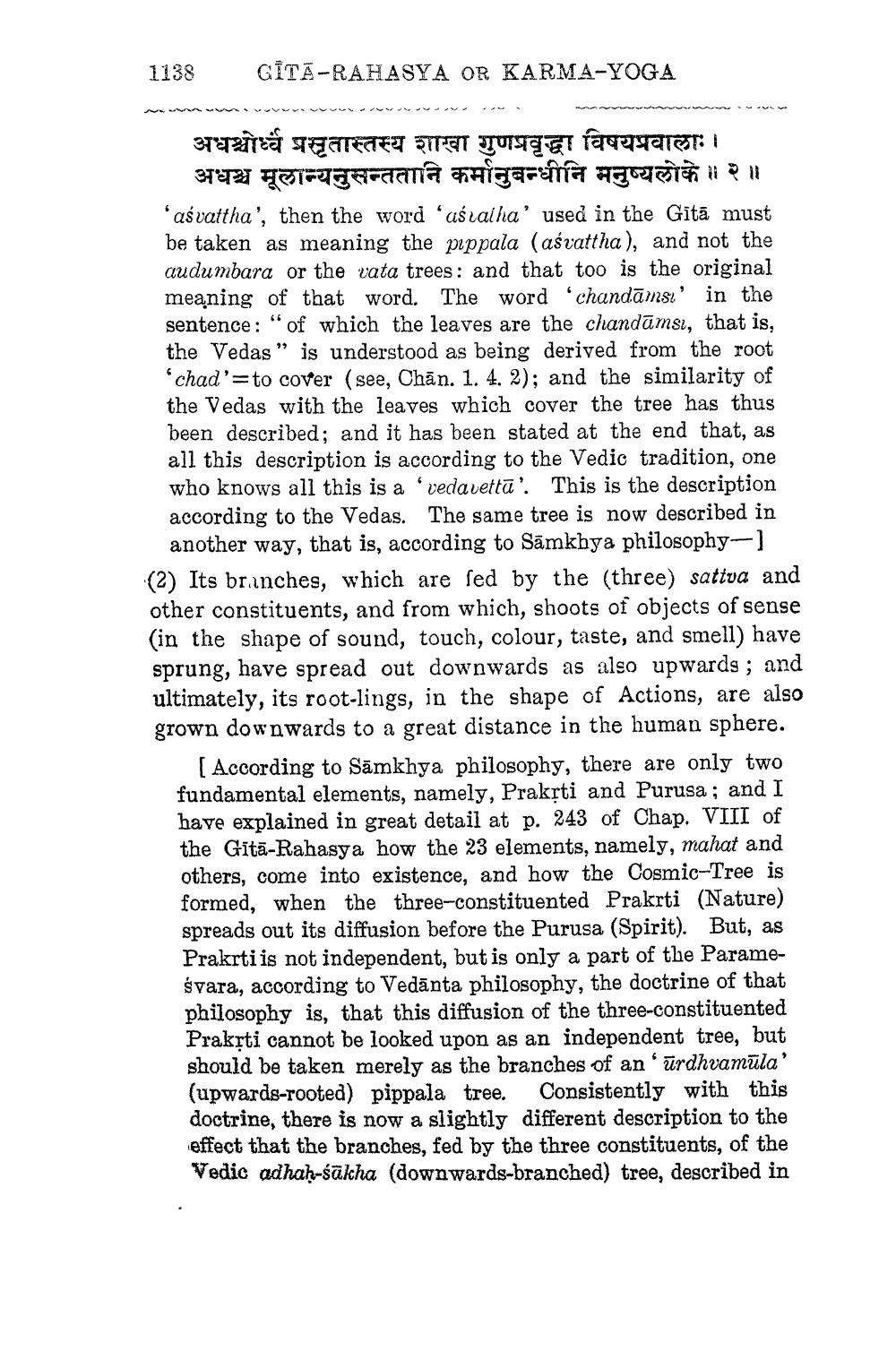________________
1138 GITĀ-RAHASYA OR KARMA-YOGA
V orwwwwwwwsvo --- अधश्चोर्ध्व प्रसृतास्तस्य शाखा गुणप्रवृद्धा विषयप्रवालाः।
अधश्च मूलान्यनुसन्ततानि कर्मानुबन्धीनि मनुष्यलोके ॥२॥ ' aśvattha', then the word 'aszaiha' used in the Gītā must be taken as meaning the pippala (asvattha), and not the audumbara or the vata trees: and that too is the original meaning of that word. The word 'chandāmsı' in the sentence: "of which the leaves are the chandāmsı, that is, the Vedas” is understood as being derived from the root 'chad'=to cover (see, Chān. 1. 4. 2); and the similarity of the Vedas with the leaves which cover the tree has thus been described; and it has been stated at the end that, as all this description is according to the Vedic tradition, one who knows all this is a 'vedavetta'. This is the description according to the Vedas. The same tree is now described in
another way, that is, according to Sāmkhya philosophy-1 (2) Its branches, which are sed by the (three) sattva and other constituents, and from which, shoots of objects of sense (in the shape of sound, touch, colour, taste, and smell) have sprung, have spread out downwards as also upwards; and ultimately, its root-lings, in the shape of Actions, are also grown downwards to a great distance in the human sphere.
[According to Sāmkhya philosophy, there are only two fundamental elements, namely, Prakrti and Purusa ; and I have explained in great detail at p. 243 of Chap. VIII of the Gitā-Rahasya how the 23 elements, namely, mahat and others, come into existence, and how the Cosmic-Tree is formed, when the three-constituented Prakrti (Nature) spreads out its diffusion before the Purusa (Spirit). But, as Prakrti is not independent, but is only a part of the Parameśvara, according to Vedānta philosophy, the doctrine of that philosophy is, that this diffusion of the three-constituented Prakrti cannot be looked upon as an independent tree, but should be taken merely as the branches of an 'Urdhvamüla' (upwards-rooted) pippala tree. Consistently with this doctrine, there is now a slightly different description to the effect that the branches, fed by the three constituents, of the Vedic adhah-sakha (downwards-branched) tree, described in




